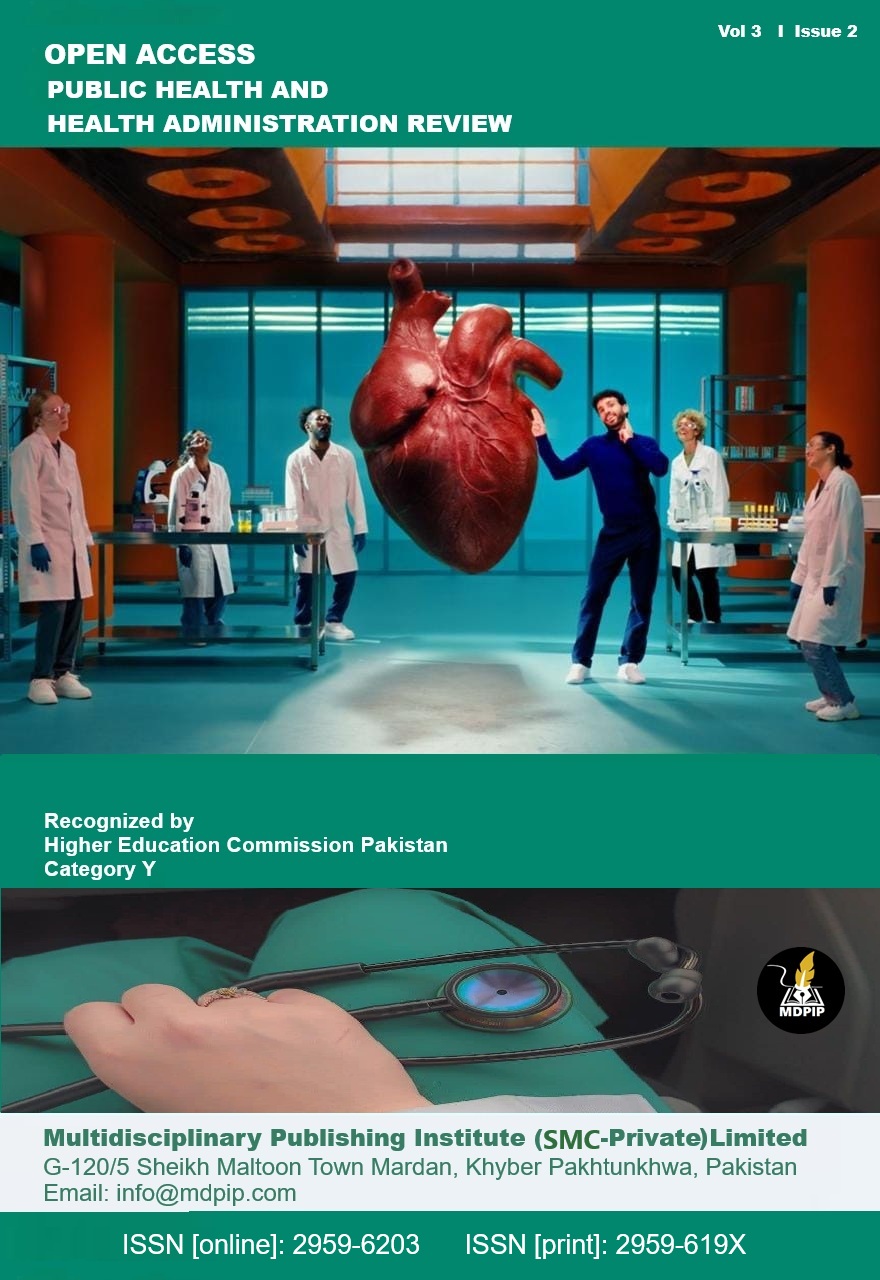Frontal QRS-T Angle as a Predictor of the Complexity of Coronary Artery Disease in Adults Presenting to a Tertiary Care Cardiac Hospital
DOI:
https://doi.org/10.59644/oaphhar.3(2).178Keywords:
Coronary Angiographies, Coronary Artery Disease, Electrocardiography, Vectorcardiography, Frontal QRS-T AngleAbstract
The study aimed to determine the association between the frontal QRS-T angle and the complexity of coronary artery disease, as defined by SYNTAX I score in patients presenting with chest pain to a tertiary cardiac care hospital, excluding those with acute coronary syndrome (ACS). The study employed has a descriptive cross-sectional design. The study was carried out at the Armed Forces Institute of Cardiology/National Institute of Heart Diseases (AFIC/NIHD), Rawalpindi, Pakistan, from October 2022 to August 2024. A total of 387 patients were included in the study in accordance with the inclusion and exclusion criteria. Non-probability consecutive sampling technique was used. Frontal QRS-T angle (fQRST) is automatically calculated by ECG machines based on a standard 12-lead Electrocardiogram (ECG). SYNTAX I score was calculated to assess the anatomic complexity of the coronary vasculature through angiography. According to results, out of 387 patients, 135 had coronary artery disease, and 45 with critical disease. fQRST ranged from 0-180° (median: 15°). SYNTAX-I score ranged from 0-33 (median: 0). Spearman’s correlation analysis showed no statistically significant correlation between the fQRST, and SYNTAX-I score (rho = -0.011, p = 0.418). The study results conclude and suggest that fQRST may not be a good predictor of the complexity of coronary artery disease in our patients.






